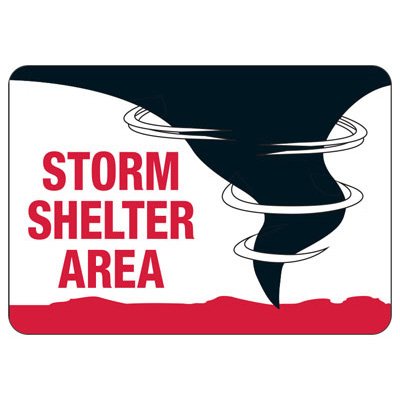
Be prepared and informed.
Comprehensive Severe Weather Preparedness Plan
1. Establish Your Safe Haven(s):
- Identify Primary and Alternate Shelters:
- Determine the safest location in your home (e.g., basement, interior room without windows).
- Locate official community storm shelters or safe buildings in your area.
- Identify multiple alternate shelters in case primary routes are blocked.
- Time Your Escape:
- Conduct practice runs to your primary and alternate shelters during clear weather.
- Accurately time your travel to each location, accounting for traffic and potential delays.
2. Prepare a “Go-Bag” and Emergency Supplies:
- Essential Documents and Medications:
- Gather copies of identification (driver’s license, passport), insurance documents, and medical records.
- Pack a supply of prescription medications and necessary medical equipment.
- Comfort and Entertainment:
- Include comfort items, books, games, or activities, especially for children.
- Survival Essentials:
- Pack a first-aid kit, flashlight, extra batteries, portable phone chargers, and a battery-powered radio.
- Store non-perishable snacks and bottled water.
3. Stay Informed and Connected:
- Multiple Information Sources:
- Monitor local weather stations, NOAA Weather Radio, and reputable weather apps.
- Ensure you have access to information through multiple channels (TV, radio, internet) in case of power outages.
- Communication Readiness:
- Keep cell phones fully charged and have backup battery packs available.
- Establish a communication plan with family and friends.
- Road Conditions and Hazards:
- Monitor road conditions before and during severe weather.
- Be aware of potential road closures, flooding, and debris.
- Never drive through flooded roadways.
- Plan multiple routes to your safe shelter.
4. Proactive Measures and Safety Protocols:
- Pre-Storm Familiarization:
- Visit your designated shelters before severe weather is forecast to familiarize yourself with the location and layout.
- Know the rules of the shelter, such as what items are or are not allowed.
- Early Evacuation:
- Seek shelter well before the arrival of severe weather.
- Avoid traveling during the storm unless absolutely necessary.
- Shelter Protocols:
- Understand and adhere to the rules and guidelines of the shelter.
- Be prepared to remain in the shelter until authorities declare it safe to leave.
- Remain Vigilant:
- Continue to monitor weather updates and follow instructions from emergency officials even after the worst of the storm appears to have passed.
- Be aware of after effects from the storm, such as flooding and fallen power lines.
Below is a map of local Storm Shelters. To get directions click on the icon of the nearest shelter and click “View in Google Maps” or the diamond road sign icon.
This list is provided for informational purposes only and we are not affiliated with any of these locations. Please let us know of any other shelters in the area and we will add them to the list.